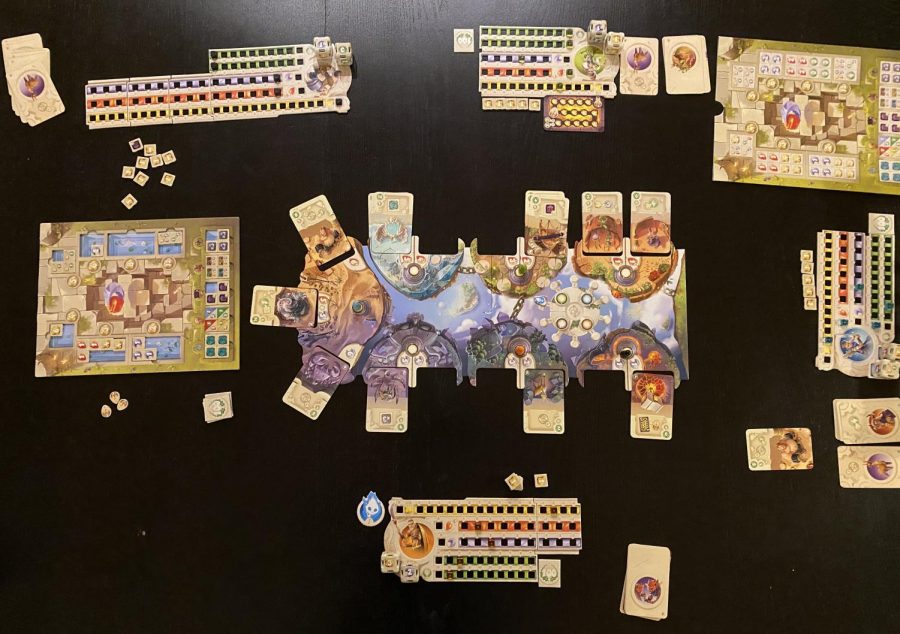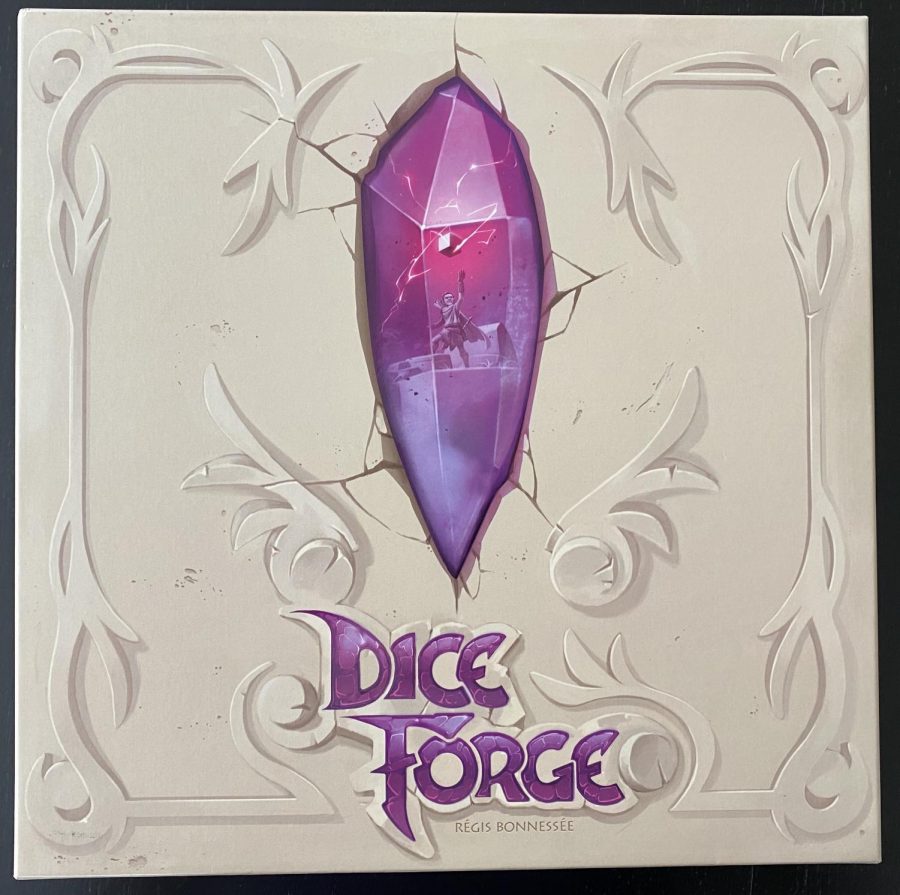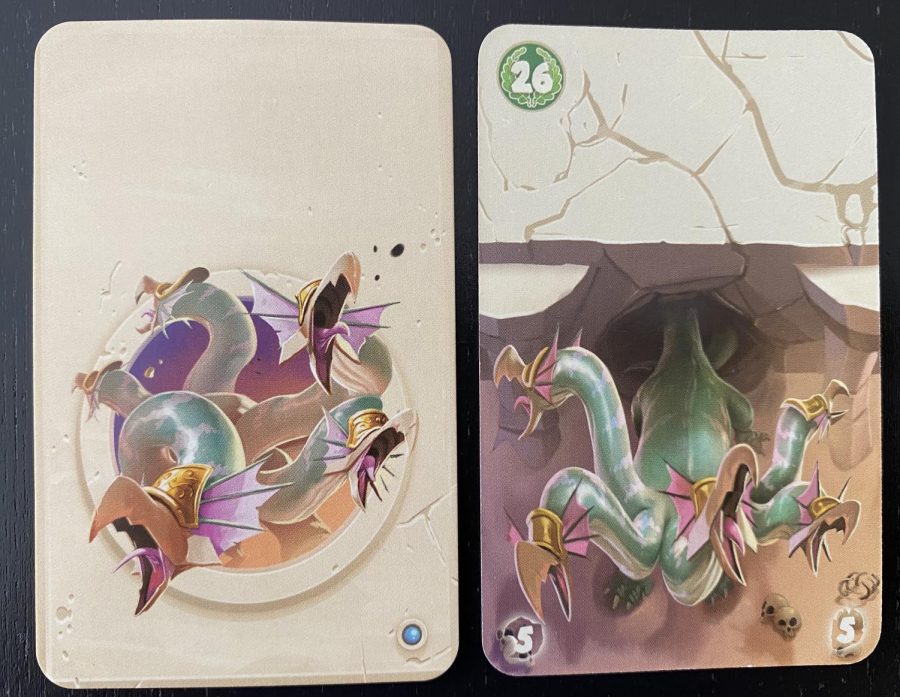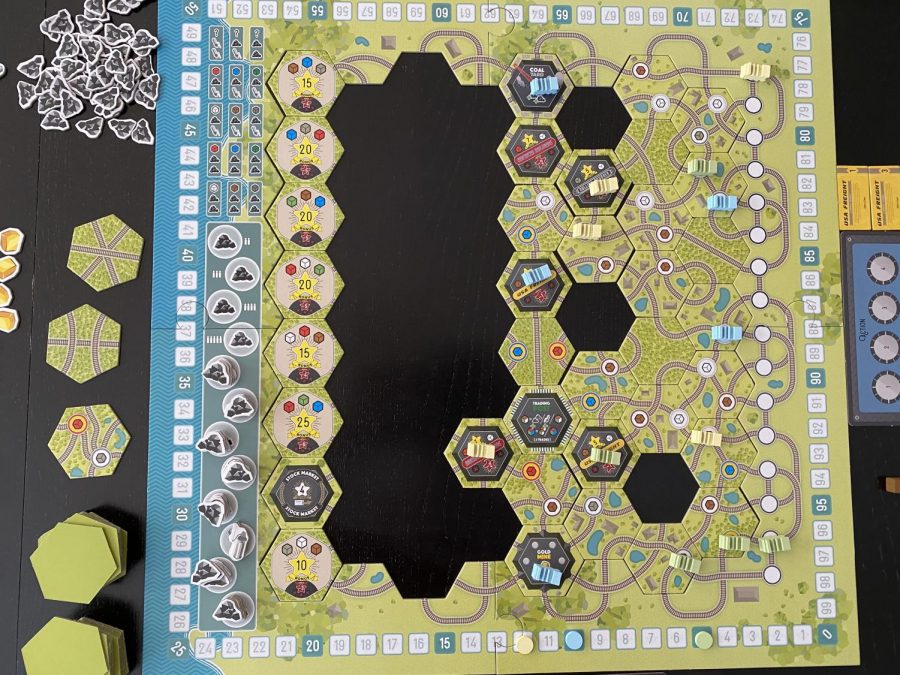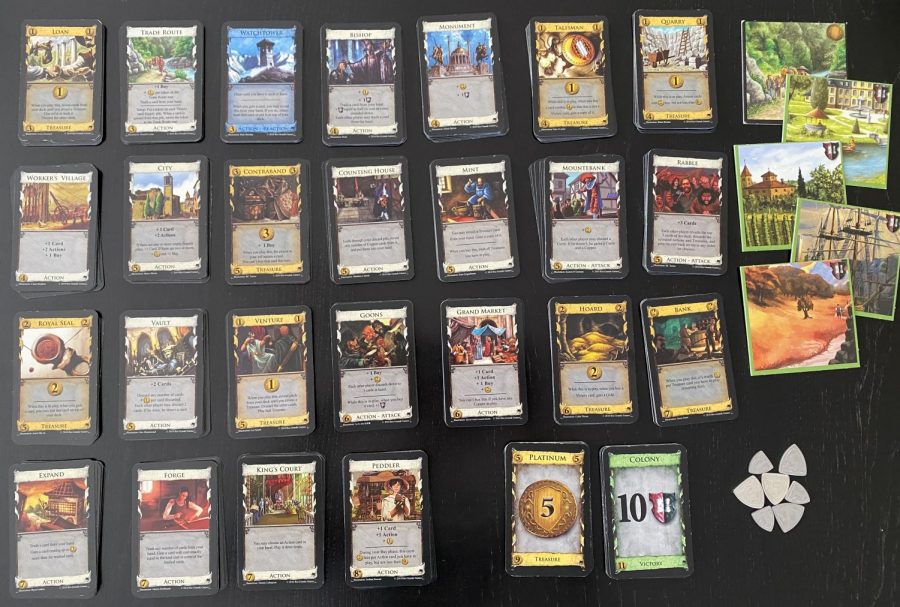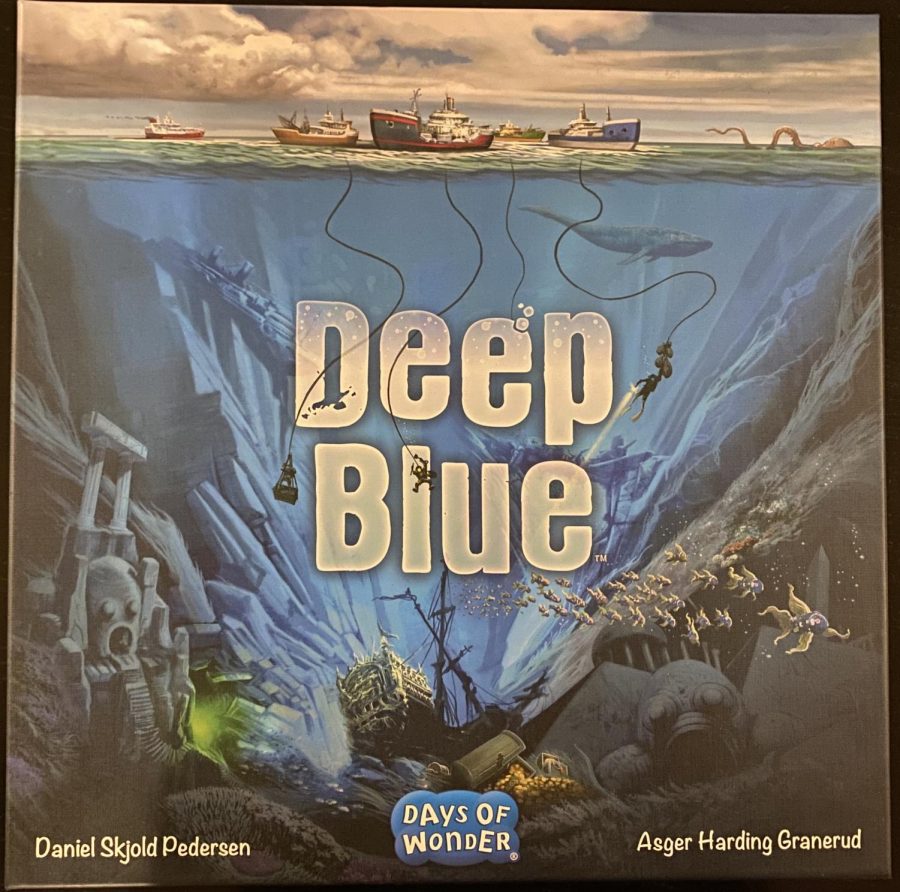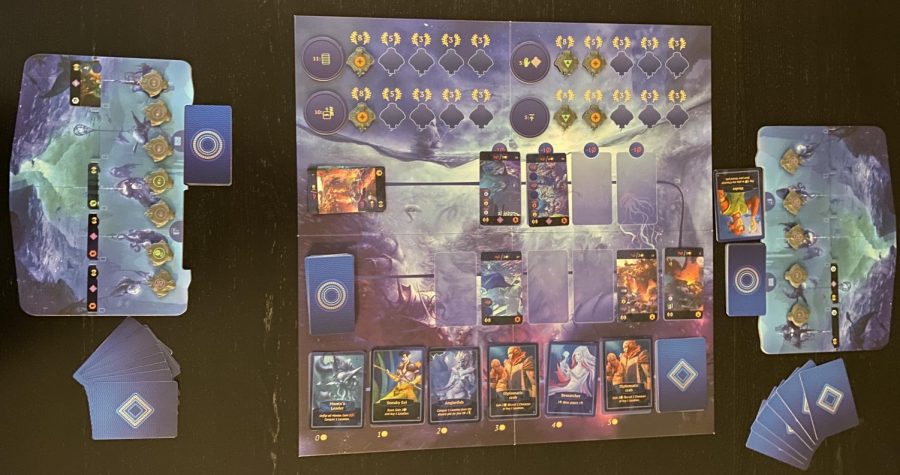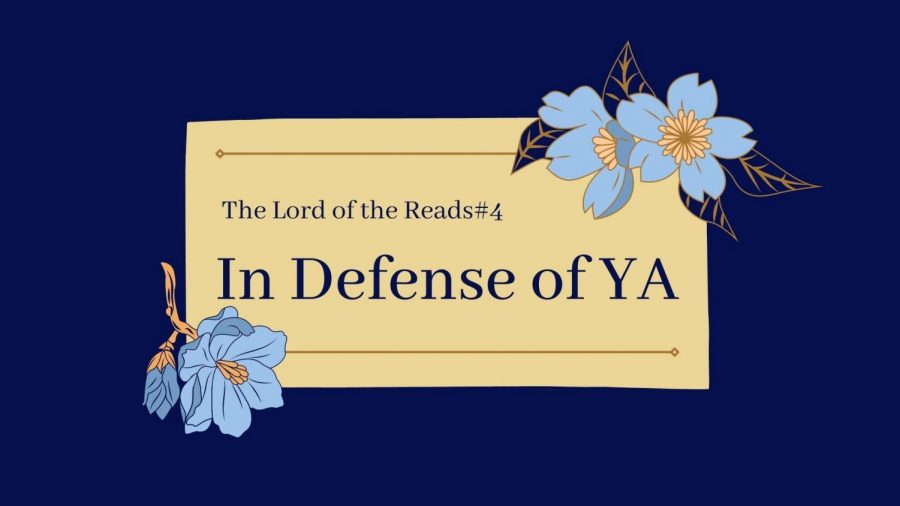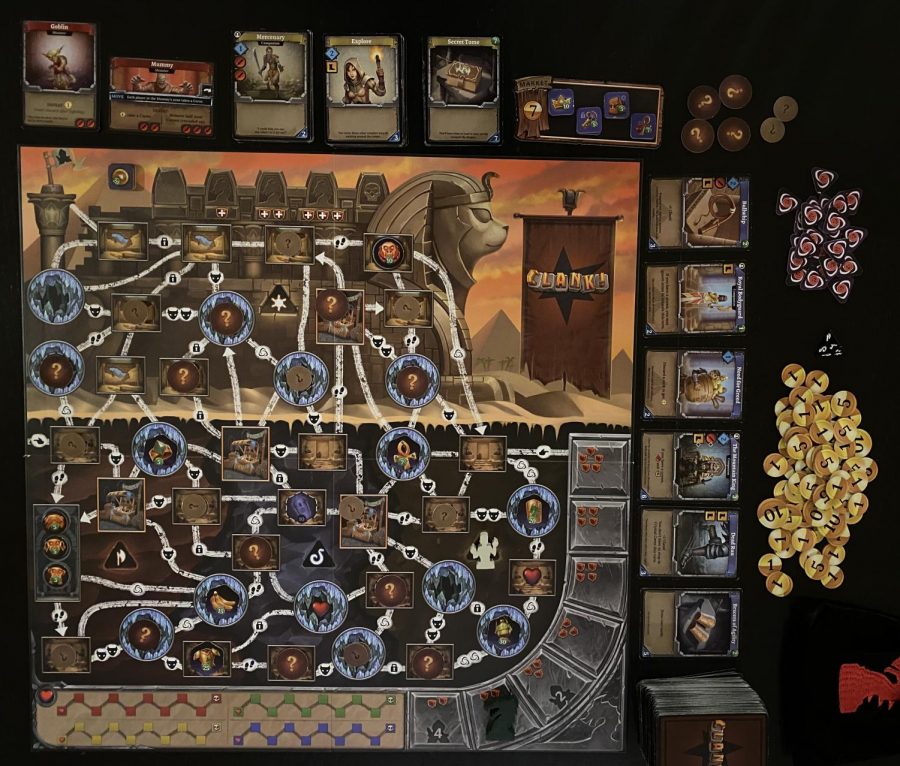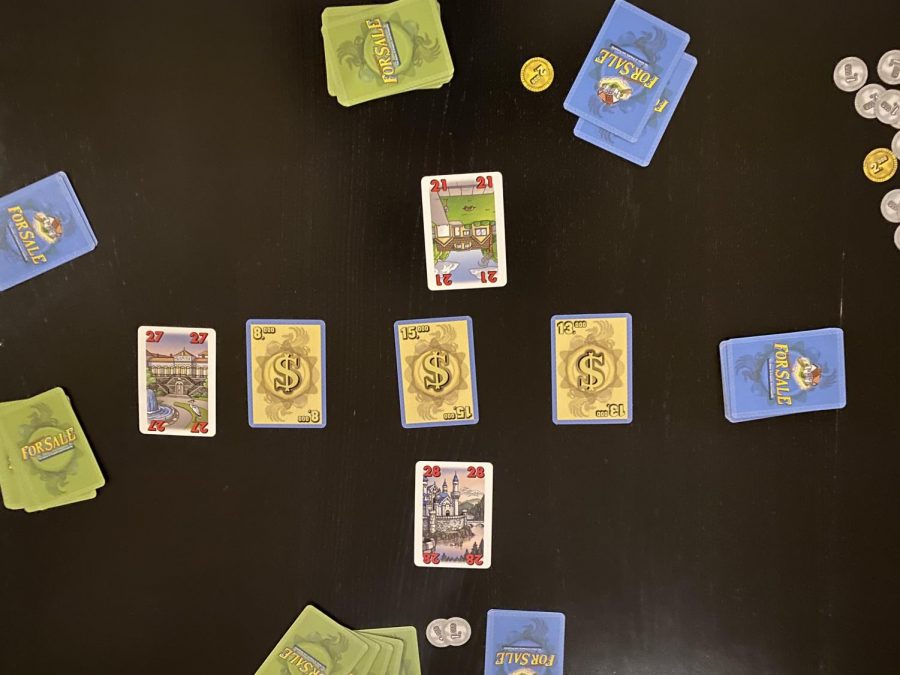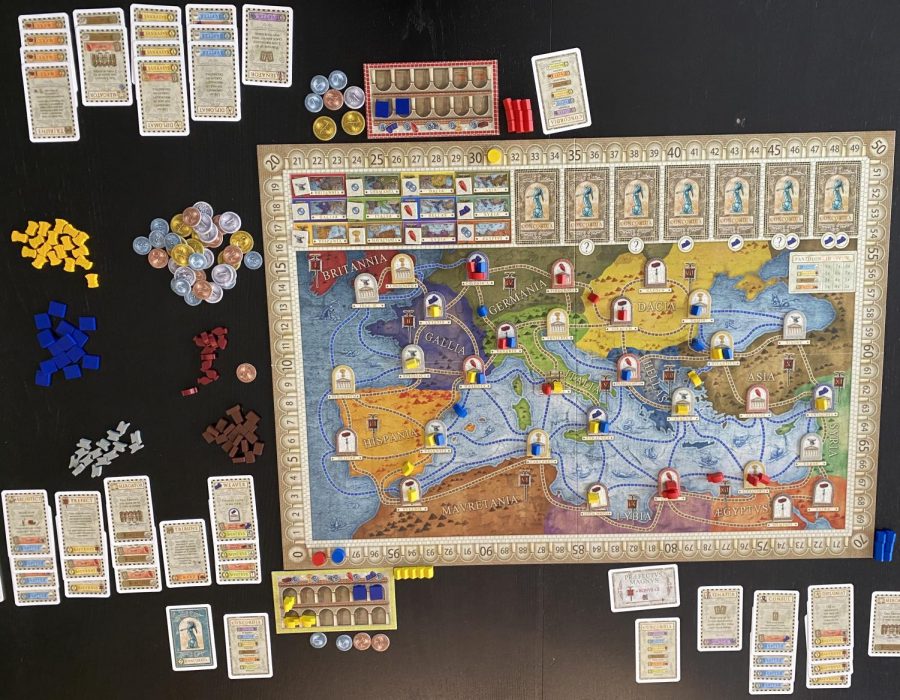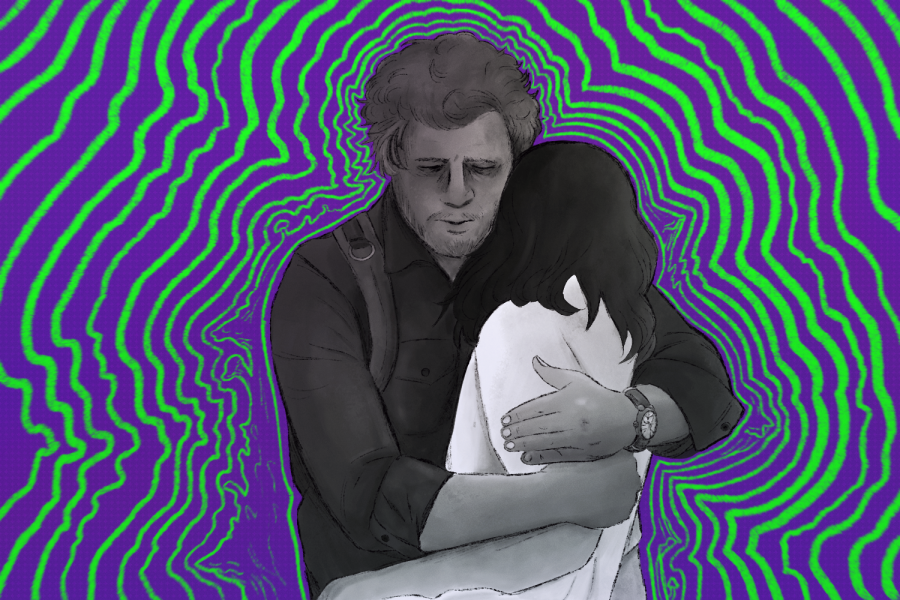There are so many games where players roll dice, and certain numbers are better than others. On the less strategic end, there are games like Monopoly and Yahtzee, and more strategic games with the same issue include Kingsburg and Stone Age. These games bank on you rolling the dice enough times that your experimental rolls meet the theoretical equal probabilities of rolling a die.
However, Dice Forge takes an innovative approach to address the luck of the dice problem by having players change the faces of their dice. During the game, players will roll their dice and collect resources on everyone’s turn. On your turn, you can use gold to forge better faces on your dice or use sun and moon shards to buy heroic feat cards. Heroic feat cards offer powerful immediate or ongoing abilities in addition to victory points. Dice Forge was published by Libellud and designed by Régis Bonnessée. The game scales from 2-4 players and takes 30-60 minutes to play. The idea of changing the sides of dice interested me a lot, but let’s find out if this engine-building mechanism is a stroke of genius or just a gimmick.
How to Play
Each player starts with two standard dice. One die has a one sun shard face, while the other die has a one moon shard face and a two victory points face; all other sides show one gold. Players will also get a player board and five cubes that they’ll use to keep track of their resources and points.
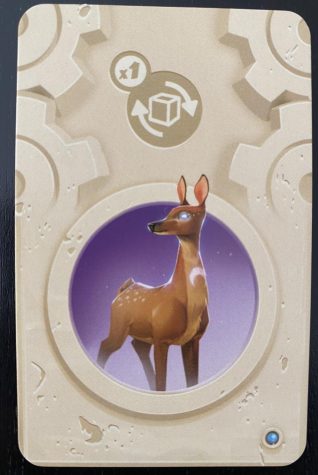
The board is placed in the middle of the table, and heroic feat cards slide into spots that correspond to their cost. The game has a recommended starting set of cards to use, but there are also some advanced cards you can alternate with once you understand the game better. Players place their pawns on the corresponding spaces on the board.
Also, place the temple near the board. The temple consists of the sanctuary, with die faces available for purchase, and the garden, with die faces you can only get through heroic feats.
After setting up, the game is ready to begin. Players will take turns going through four steps. During the first step, all players will receive a divine blessing by rolling both their dice, even if it’s not your turn. They receive the resources rolled on the dice by moving the cubes on their player board forward. As the game progresses, resolving your divine blessing may be complicated. However, a supplementary hero aid explains how complicated die faces and heroic feat cards work.
Only the active player does things for the rest of their turn. Next, they activate any reinforcements that they want to. Reinforcements are hero feat cards that give a player an ability every turn.
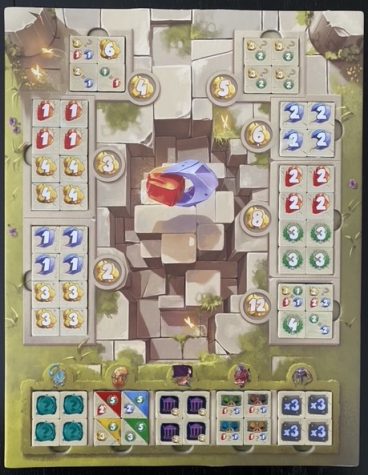
The third step to one’s turn is their main action. A player’s main action can be to forge or to perform a heroic feat. When a player forges, they may purchase any number of unique die faces from the sanctuary by paying the gold costs shown next to each pool. Players may buy any number of different faces as long as they have enough gold. Then, the player must take off die faces from their dice and replace them with the ones they bought. Once a die face is removed, it cannot be forged onto the die again for the rest of the game.
The other option for the main action is to perform a heroic feat. To do this, a player moves their pawn to the island with the card they will purchase. If another player is there, that player returns their pawn to the main island and receives a divine blessing. Then, the active player pays sun or moon shards to perform the heroic feat. Many heroic feats give a one time benefit when they are performed. A few of the heroic feats are reinforcements, which can be activated for a small benefit in all future rounds. Some of the advanced heroic feats give a conditional ability that activates every time a particular condition is met. In addition to the ability, heroic feats are worth victory points.
After completing your main action, you may pay two sun shards to take an extra forge or heroic feat action, which can be the same type of action you did in the previous step. You can only take one extra action before you must end your turn.
When all players take a turn, the round marker progresses. At the end of nine or ten rounds, players will get their score from rolling victory points on their dice and getting heroic feats.
Final Thoughts
Dice Forge is an enjoyable game to play. Changing out the die faces puts players in control of their luck. While you may not roll your upgraded die faces every turn, you can further forge your dice to increase the likelihood of rolling better die faces. The mechanism is definitely not a gimmick and does an adequate job of addressing the luck involved with dice games.
What’s often more important than the mitigated luck in Dice Forge is that the die-crafting mechanism allows players to pursue a huge variety of strategies. Some players can focus on getting lots of gold. Within that strategy, players have to choose whether to spend all their gold on one powerful die face or a handful of mediocre ones. Other strategies involve putting victory point faces on your dice, so you can get points on everyone’s turn.
However, the heroic feats break open the number of combos. The board is designed to always have a set of heroic feat cards with the same costs. Players can go after the moon shards, sun shards, or a combination of both do get heroic feats that best match their strategy. The abilities of the heroic feats are all unique and beneficial. I really like the reinforcement cards that give you something every turn.
Unfortunately, many of the heroic feat cards are dominated by the victory points they provide, which overshadows that cards have special abilities. If you play with experienced players, everyone will realize the value of picking a heroic feat card based on its balance between power and points. New players usually feel obligated to use all their shards instead of examining what the special abilities are.
Dice Forge has little player interaction. You can play the game without any player pawns, but the add-on mechanism in moving your pawn to an island when performing a heroic feat does improve the game. First of all, it makes it easy to see what someone is doing on their turn. More importantly, it adds significant player interaction. The only other player interaction in the game relates to some of the heroic feat abilities and special die faces you can forge. With this nonessential mechanism, your pawn blocks two or three heroic feat cards.
In my experience, players usually do not want to bump other players; getting a divine blessing is like getting an extra turn. Players can block spots on the board or monopolize cards for a specific heroic feat if they block an island. Of course, none of these are problematic because you can always bump another player if you are willing to give them a free roll.
Another aspect where many games struggle is giving players extra turns. Often, either the extra turn powers are too powerful, or the game imposes so many restrictions on the extra turn you cannot do anything. In Dice Forge, the one turn limit and two sun shards cost are just right. You won’t always take an extra turn because two sun shards is a hefty price. Furthermore, limiting the number of extra turns to one was an imperative design choice because it stops certain custom dice from building up endless cycles of turns.
All of these small rules make the game slightly harder to teach and learn. Dice Forge is by no standards a gateway game, but its custom dice will appeal to many gamers. Nevertheless, there are still a few things that you should consider. The game length matches the box, clocking in at no longer than an hour. A three-player game is different from a two or four-player game because Dice Forge has many player-dependent setup instructions. Among these instructions are the number of each heroic feat, the number of die faces in each pool, and the number of game rounds. You also receive two divine blessings on each turn in a two-player game. These choices make mathematical sense but also make it a little harder to set up and get a game started; you have to figure out how to set up every time.
If you’ve read my other reviews for games, such as Dominion or Small World, you’ll know that I like having a variety of powers in each game. This is where Dice Forge falls short for me. The game has a few sets of alternate cards, which I enjoy mixing in, but I don’t think it’s enough to make every game different. To Libellud’s credit, they did add some more cards in an expansion, but I still wish for a way to add tons of different cards to the game, so every game is unique.
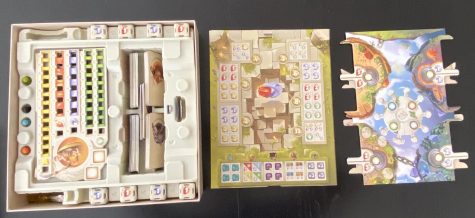
On the plus side, all of the artwork on the cards that is fantastic. There isn’t a strong theme, but I think it has something to do with influencing gods. Anyway, the other components for the game are also good and have the same brilliant artwork. My only problem with components is that some players have a hard time changing the die faces. It’s actually been such a problem that I keep a flat screwdriver in this game box for that reason.
In the end, I enjoy every game of Dice Forge that I play, but I can’t play it too often as not to exhaust the limited number of card possibilities. The designers have created a truly unique game; I hope for Dice Forge to continue adding more cards to increase the number of strategic combinations and improve the replayability. Due to these reasons, I rate Dice Forge a 7 out of 10.
[star rating=”3.5″]

